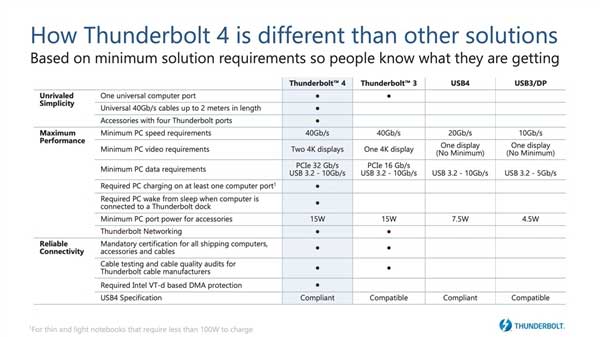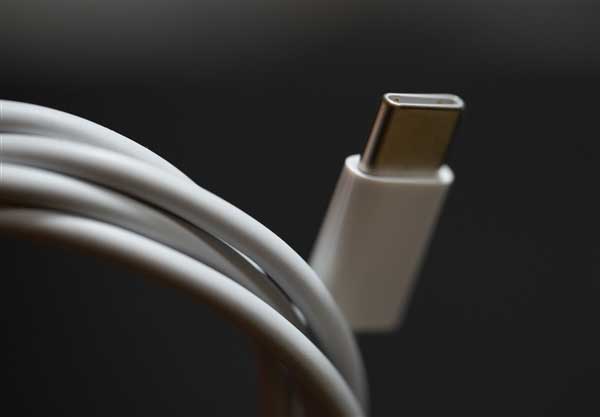What is the difference between Thunderbolt 3, Thunderbolt 4, USB 3.0, and USB 4 even though they are all Type C Port?: Let us learn though one picture
Recently, there has been a lot of news about Apple switching to the USB-C interface for the iPhone next year, and it seems that the convenience of coping with different occasions with one cable is just around the corner.
However, do you have any doubts, although they are all USB-C interfaces, they can actually correspond to various protocols such as Thunderbolt 4, Thunderbolt 3, USB 3.0, USB 4, etc. So what is the difference between them?
In fact, we can see it through an official picture:

If you have to distinguish which is better, then the Thunderbolt 4 certified interface and data cable are undoubtedly the jewel in the crown. It is backward compatible with all previous Thunderbolt standards, and can achieve a single-line transmission of up to 2 meters, including PCIe, DP , USB data, etc.
Although Thunderbolt 4 is still 40Gps bandwidth (bidirectional), the PCIe link can be increased from 16Gbps of Thunderbolt 3 to 32Gbps, and supports dual 4K or 8K display output, and also supports four-port Thunderbolt docking station, sleep wake-up and virtual machine Intel VT- d DMA (Direct Memory Access) protection. So don't think that the change from Raiden 3 to Raiden 4 is just a change of names ,if you just look at the bandwidth of them.
In comparison, USB 3/DP and USB 4 are much more tolerant than Thunderbolt. It can also be called USB 4 (not full function) if it runs less than 40Gbps, and the minimum power supply is only 4.5W and 7.5W respectively.
USB History
USB can be traced back as early as 1996. The initiators include Microsoft, IBM, Intel, etc. The purpose is very simple, which is to promote a common interface. At that time, the starting rate was 1.5Mbps, and USB 1.1 was upgraded to 12Mbps. In 2001, the bandwidth of USB 2.0 leaped to 480Mbps. Today, 20 years later, USB 2.0 is still active in various fields.
In 2011, USB 3.0 was born and officially entered the Gigabit era. The initial rate of USB 3.0 reached 5Gbps. In 2014, USB 3.1 came out, in which USB 3.1 Gen2 introduced the Type-C interface for the first time, and the speed was increased to 10Gbps. In 2017, USB 3.2 once again increased the speed to 20Gbps, and the C port became a must.
However, in 2019, the USB organization launched a new naming mechanism. USB 3.0/3.1 was renamed USB 3.2 Gen1/Gen2, and USB 3.2 was renamed USB 3.2 Gen2x2, but some hardware manufacturers are still accustomed to the previous naming practice.
In the same year, USB 4 was released, which can be said to be a civilian version of Thunderbolt 3. The bandwidth was increased to 40Gbps, the power supply was increased to 100W, and support for PCIe link and DP1.4a transmission was introduced.
Thunderbolt (Apple calls it "Thunderbolt") History
Thunderbolt was jointly developed by Intel and Apple. It debuted under the name of Light Peak in 2009 and was officially launched in 2011. It was developed based on mini DP at the time. At the beginning of the design, it was intended to integrate the mixed output of traditional data and video signals, including the original daisy chain. The dual-channel bandwidth is up to 20Gbps. Two years later, Thunderbolt 2 came out, upgraded to support DP1.2 signal transmission, and supported 4K for the first time.
Thunderbolt 3 integrates PCIe 3.0, DP1.2 and USB 3.1, supports 4K 60/5K screen, 100W power supply, based on Thunderbolt 3, an external graphics card is officially possible.



















View More(Total0)Comment Lists